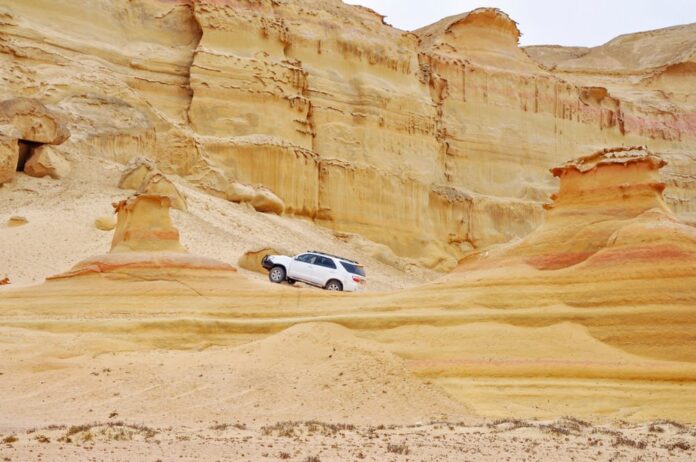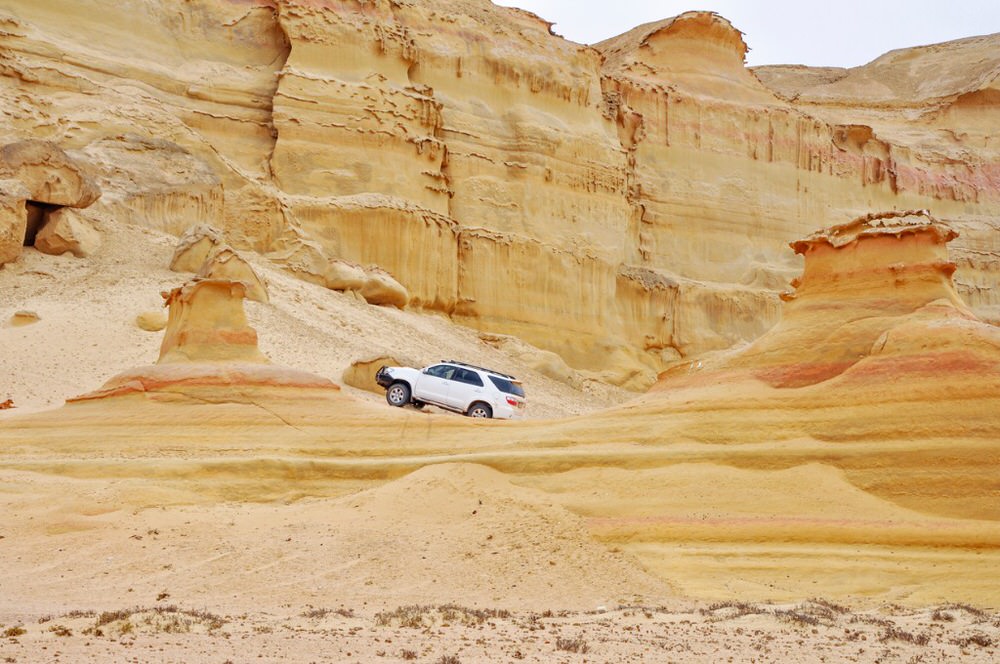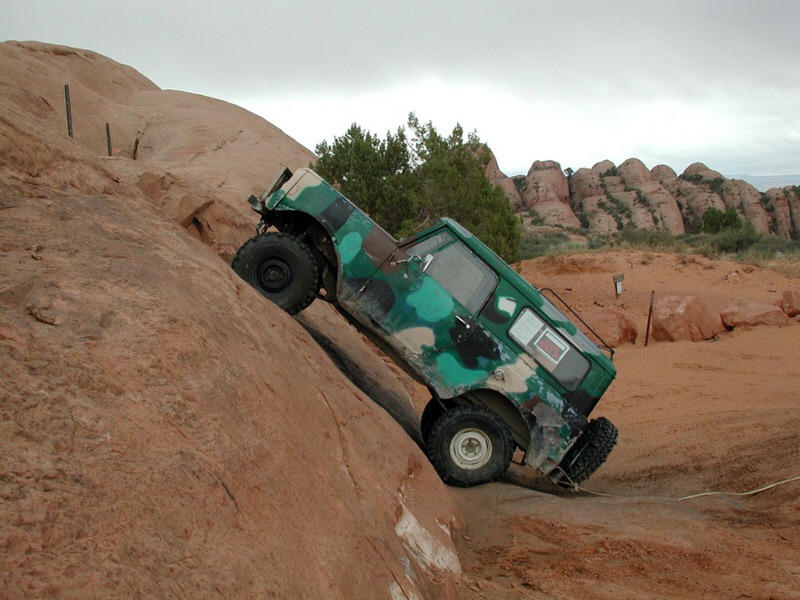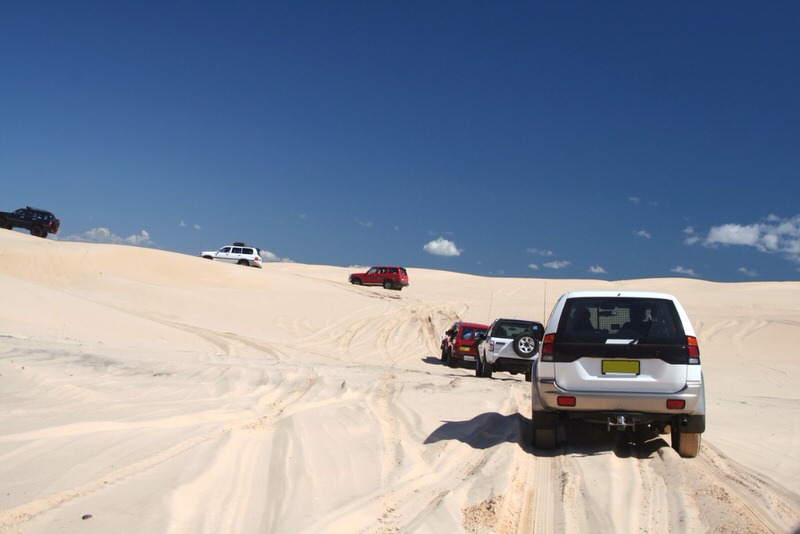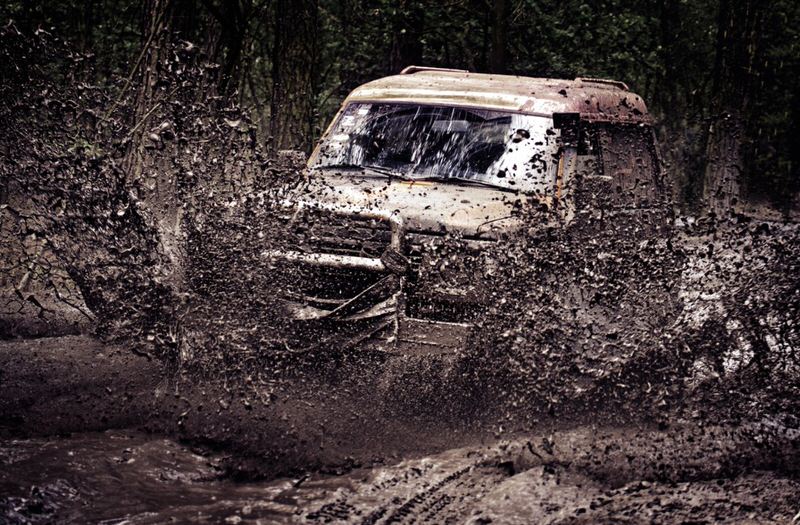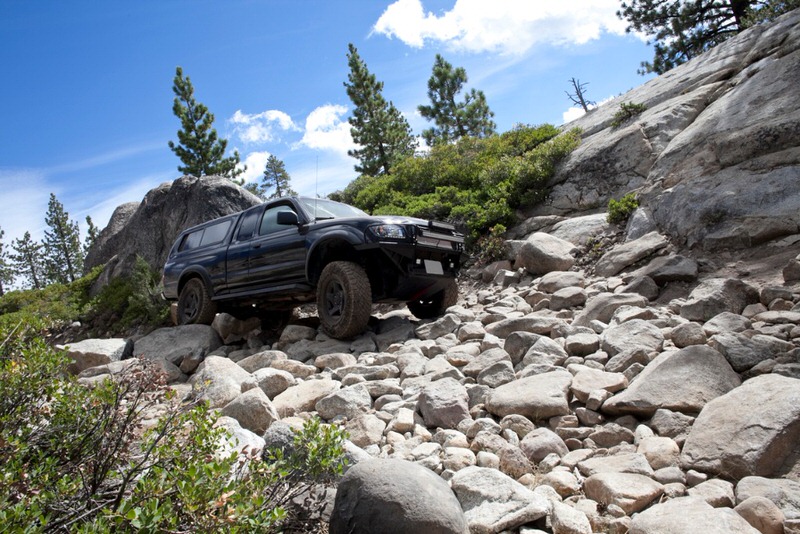photo by YolandaVanNiekerk via iStock
Driving up steep hills when off-road might be one of the most daunting tasks. The ground is loose and, on many occasions, the steep hill is complemented by a big drop-off on the side.
However, if you know your vehicle well enough, and are aware of the correct techniques to use, steep hills should be nothing to worry about.
In this driving guide for steep hills, we’ll discuss some techniques you can use to make the ascents easier and less scary.
Pick Your Line
photo by 1000kbps via iStock
The first thing to do is get out of the vehicle and assess the climb.
If you have a spotter, try deciding the correct line you should take. A spotter can be especially helpful for climbing steep hills because as you are ascending, your view of the trail in front is very limited.
Have a look at the terrain too, is it loose rock? Or is it a grippy surface? These will be the most important factors in the way you approach the climb up steep hills.
Driving Guide for Steep Hills: Sand
photo by chrisho via iStock
Getting up a sandy hill requires momentum. The best option here is to gather up some speed before the climb and try to carry that speed through the climb. Approaching sandy inclines slowly will result in your 4WD digging into the ground; therefore, getting stuck.
Learn More:
Muddy Hills
photo by Lorado via iStock
On a muddy hill, you will want to approach at a relatively slow but steady speed. Believe it or not, there are different types of mud. Depending on your location you might come across mud that is grippy or that clay-like mud that will prevent anything from going up.
One of the best tips in this driving guide for steep hills is that approaching at a slow but steady speed will allow you to get a feel for the climb, if it is the grippy mud you will probably make it up first go – if not, go back and use some more loud pedal.
Be careful though, because of the lack of grip, sudden inputs of the throttle and steering do not result in change of direction or speed. You need to be smooth with driver inputs and always be aware that on slippery terrain the vehicle will want to follow the ruts previously engraved in the track. So, if for example, you are trying to straddle a rut, there is a high likelihood you might slide and end up in it.
Driving Guide for Steep Hills: Snow
photo by simone rossi via iStock
Snowy inclines are the most difficult ones, the truck will again want to follow ruts that already exist on the track, but it will do so much more easily and frequently.
Using your lockers in such terrain might also increase the likelihood of the vehicle crab-walking or sliding around. The best approach here would again be approaching slowly to get an understanding of the path the vehicle wants to follow to come up with the correct line.
Once again, you should avoid sudden inputs. If the incline has no turns and it is safe to do so some momentum will help complete the climb.
Loose Rocks/Dried-Up Terrain
photo by initialsphoto via iStock
On this type of hill, it is even more important to get out and walk the climb. Have a look for any rocks that may be too big to drive over and try to imagine where your vehicle’s wheels will sit on the track. Pinpoint any sharp rocks that may rip your tires open.
When approaching the climb, keep the vehicle at about 30-35% throttle as this will provide enough power to overcome the loose terrain while preventing excessive stress from wheels spinning on loose rocks.
This driving guide for steep hills will hopefully make ascending steep hills a little easier and less scary. Remember that practice makes perfect and as you gain more experience and knowledge on what your specific vehicle is capable of ascending a hill will only become easier.



